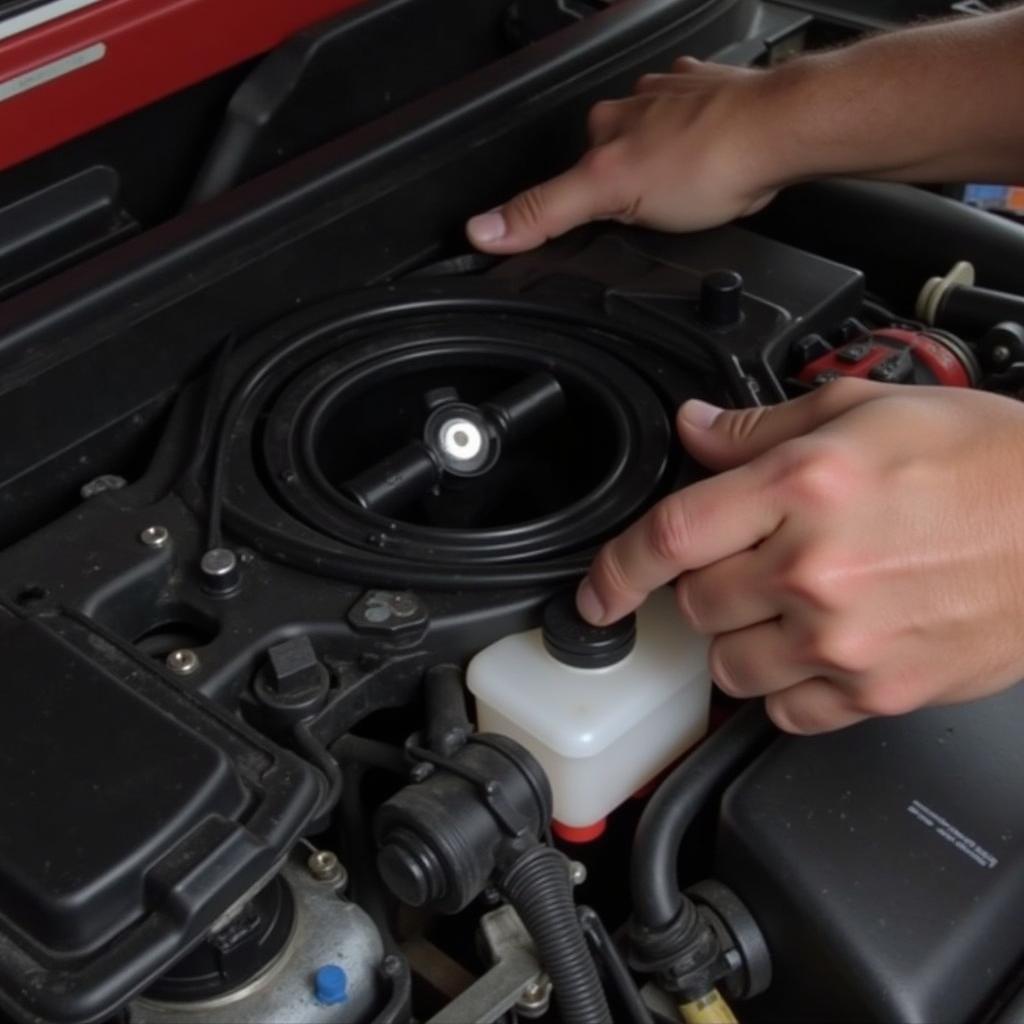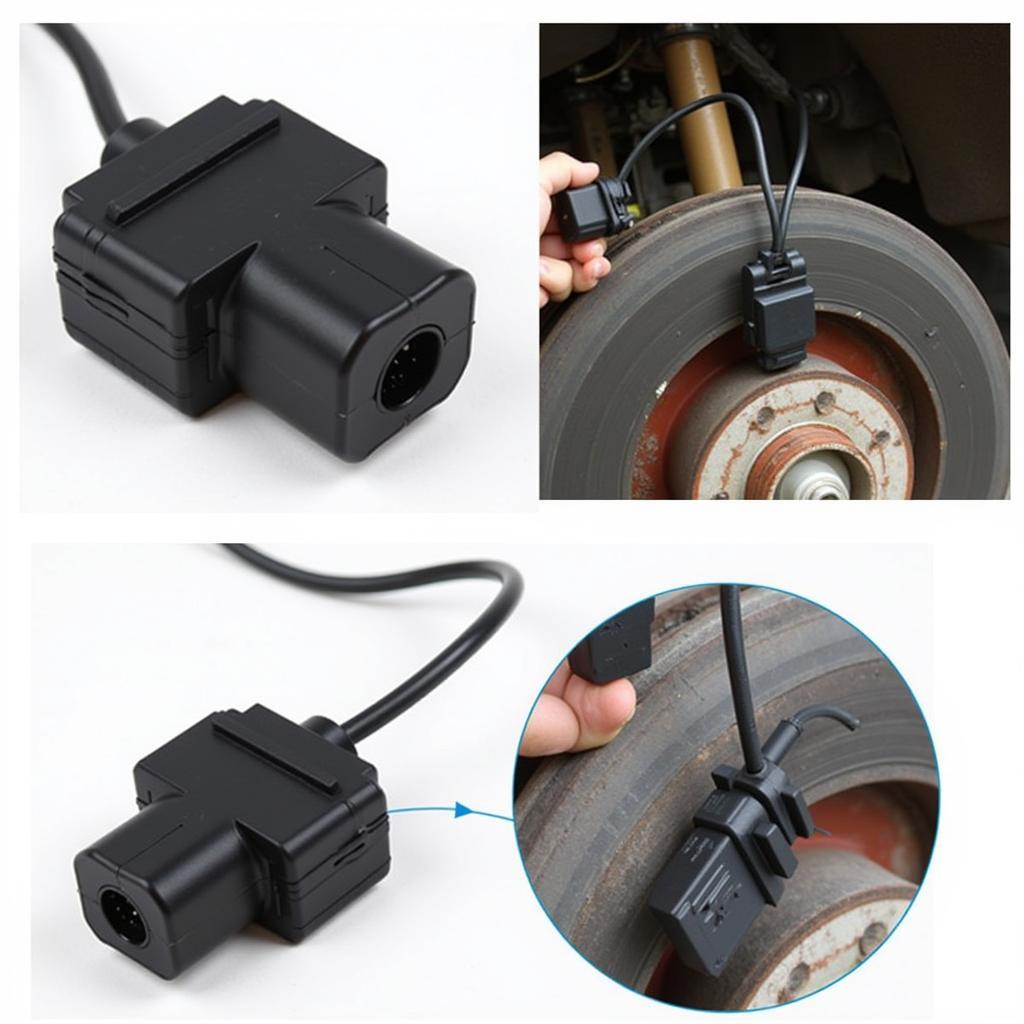The brake fluid reservoir cap with warning switch in your 2008 BMW 328i plays a critical role in maintaining optimal braking performance and safety. This cap not only seals the brake fluid reservoir, preventing contamination and moisture absorption, but also houses a sensor that triggers a warning light on your dashboard if the brake fluid level drops too low.
If you’re experiencing issues with your brake fluid reservoir cap or the warning switch, this comprehensive guide will walk you through the common problems, troubleshooting steps, and potential solutions.
Understanding the Brake Fluid Reservoir Cap and Warning Switch
Before we delve into troubleshooting, let’s understand the function of this crucial component.
The brake fluid reservoir cap serves two primary purposes:
-
Sealing the Reservoir: The cap creates an airtight seal on the brake fluid reservoir, preventing contaminants like dirt, debris, and moisture from entering and compromising the brake fluid quality.
-
Housing the Warning Switch: Integrated into the cap is a sensor that monitors the brake fluid level. When the level drops below a safe threshold, this sensor activates a warning light on your dashboard, alerting you to a potential issue with your braking system.
Common Issues with the Brake Fluid Reservoir Cap and Warning Switch
Here are some common problems you might encounter:
1. Illuminated Brake Warning Light
Possible Causes:
-
Low Brake Fluid Level: This is the most common reason for the warning light. It could indicate a leak in your brake lines or worn-out brake pads.
-
Faulty Brake Fluid Level Sensor: The sensor itself might malfunction, sending a false signal even if the brake fluid level is sufficient.
-
Damaged Wiring Harness: The wiring connecting the sensor to the dashboard might be damaged, leading to a faulty signal transmission.
2. Leaking Brake Fluid Reservoir Cap
Possible Causes:
-
Cracked or Damaged Cap: Over time, the cap can crack due to heat, pressure, or wear and tear, compromising the seal.
-
Worn-out O-ring: The O-ring creates a seal between the cap and the reservoir. If it’s damaged or worn out, it can cause leaks.
3. Difficulty Removing or Installing the Cap
Possible Causes:
-
Crossed Threads: If the cap isn’t screwed on straight, it can cross-thread, making it difficult to remove or tighten.
-
Debris or Corrosion: Dirt, debris, or corrosion on the cap threads or the reservoir neck can create resistance.
 Brake Fluid Reservoir Cap with Warning Switch
Brake Fluid Reservoir Cap with Warning Switch
Troubleshooting and Solutions
Follow these steps to diagnose and address issues with your brake fluid reservoir cap and warning switch:
1. Check the Brake Fluid Level
-
Park your vehicle on a level surface and engage the parking brake.
-
Locate the brake fluid reservoir. It’s usually a translucent plastic container located near the firewall on the driver’s side.
-
Visually inspect the fluid level. Most reservoirs have “MIN” and “MAX” markings. If the fluid is below the “MIN” mark, it needs to be topped up.
Note: If you need to add brake fluid, use the type and specification recommended in your BMW 328i owner’s manual.
2. Inspect the Brake Fluid Reservoir Cap
-
Carefully remove the cap by twisting it counterclockwise.
-
Examine the cap for any visible cracks, damage, or wear and tear.
-
Inspect the O-ring for damage, deformation, or signs of wear.
Solution: If you find any damage to the cap or the O-ring, replace the cap with a new one from a reputable brand.
3. Check the Brake Fluid Level Sensor
-
With the cap removed, locate the sensor. It’s usually a small float or a probe inside the reservoir.
-
Gently move the float up and down. It should move freely without any resistance.
-
Visually inspect the sensor for any signs of damage or corrosion.
Solution: If the sensor is stuck, damaged, or corroded, it might require replacement. Consult your BMW dealership or a qualified mechanic.
 Inspecting the Brake Fluid Level Sensor
Inspecting the Brake Fluid Level Sensor
4. Inspect the Wiring Harness
-
Trace the wiring harness from the sensor to where it connects to the vehicle’s electrical system.
-
Check for any loose connections, cuts, fraying, or damage to the wiring insulation.
Solution: If you find any damage to the wiring harness, it needs to be repaired or replaced by a qualified mechanic.
5. Check for Brake Fluid Leaks
-
Inspect the area around the brake fluid reservoir for any signs of leaks.
-
Check the brake lines leading to and from each wheel for any signs of wetness, drips, or leaks.
Solution: If you detect any brake fluid leaks, it’s crucial to address them immediately. This might involve tightening connections, replacing damaged lines, or repairing leaks within the braking system itself. Consult a qualified mechanic to diagnose and repair brake fluid leaks.
Expert Insights
“Ignoring a lit brake warning light can lead to serious safety hazards,” says Mark Stevenson, a certified automotive technician with over 20 years of experience. “It’s crucial to address any issues with the brake fluid reservoir cap, warning switch, or the braking system promptly to ensure optimal braking performance and prevent potential accidents.”
Conclusion
The brake fluid reservoir cap with warning switch is a vital component in your 2008 BMW 328i’s braking system. By understanding its function and following these troubleshooting steps, you can identify and resolve common issues, ensuring the safety and reliability of your vehicle’s braking system. However, if you’re unsure about any step or the issue persists, it’s always best to consult a qualified mechanic for a thorough diagnosis and repair.


